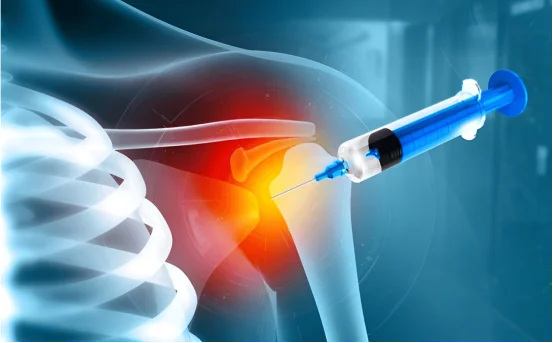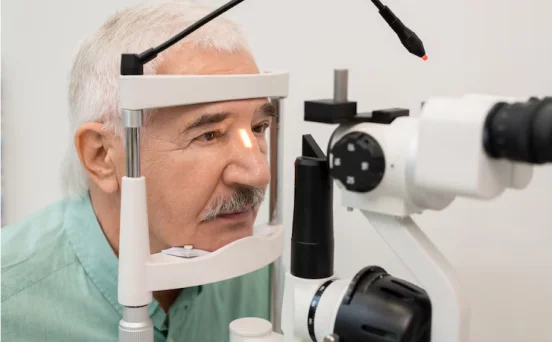The Rotator Cuff is vital to shoulder stability and movement. It can lead to severe pain, weakness and a limited range of movement when damaged. Rotator cuff surgery is not required for every injury, but it becomes necessary in cases of severe or persistent pain. diagnosis for rotator cuff repair surgery must be accurate and done as soon as possible.
What Is a Rotator Cuff
Understanding of diagnosis for rotator cuff repair surgery
The Rotator Cuff is made up of four muscles and tendon surrounding the shoulder joint. These muscles hold the upper arm bone’s head (humerus), firmly in the shallow socket of your shoulder blade. The rotator-cuff injury can be anything from a mild inflammation to a partial or complete tear.
Why is accurate diagnosis important?
A rapid and accurate diagnosis can help prevent further damage. Physical therapy and other conservative treatments may be effective for minor injuries. Rotator cuff surgery is necessary when:
-
Full-thickness Tears
-
Chronic pain that does not respond to treatment
-
Shoulder function loss
-
Re-injury and degenerative damage
Symptoms that may indicate a Rotator Cuff Injury
Patients usually report several symptoms before a diagnosis is made, including
-
Shoulder pain that persists, particularly at night
-
Lifting or rotating the arm with difficulty
-
Shoulder weakness
-
When moving the shoulder, you may hear a popping or clicking sound.
-
Pain worsens when overhead activities are performed
These symptoms should prompt a more detailed diagnosis for rotator-cuff repair surgery.
Diagnosis of Rotator Cuff Repair Surgery
Learn how doctors diagnose a torn rotator-cuff and determine whether surgical repair is required.
1. Medical History Review
Your orthopedic specialist begins by reviewing your medical records, including:
-
Shoulder pain: When and how it begins
-
Shoulder injuries
-
Activity Level and Occupational Stress
-
Prior treatments:
It is important to rule out any other conditions, such as frozen shoulder or arthritis.
2. Physical Examination
Your doctor will then perform a thorough shoulder exam. This usually includes:
-
Checking the range of motion
-
Test your shoulder strength
-
Feeling the joint to check for tenderness or swelling
-
Perform specific maneuvers to pinpoint the location of an injury (e.g. Neer test, Hawkins Test)
These physical tests can be used to determine the likelihood that you have a rotator-cuff tear.
3. Image tests for accurate diagnosis
Imaging tests are recommended if the physical examination suggests a rotator-cuff injury. These help confirm the diagnosis and determine the severity.
a) X-rays
X-rays cannot show soft tissues like tendons but they can be used to identify bone spurs, arthritis, and joint space narrowing. All of these could cause shoulder pain.
b) Ultrasound
Ultrasound can show real-time images on the rotator cuf tendons. This non-invasive, cost-effective test is used to detect:
-
Tears of any thickness, partial or total
-
Inflammation and fluid accumulation
-
Tendon retraction
c MRI (Magnetic Resonance Imaging).
MRI is the gold standard in diagnosing rotator cuff injury. It provides detailed images of soft tissues as well as bone. This makes it an ideal tool for:
-
Tendon tears (location, size and type)
-
Muscle Atrophy
-
Retraction of the tendon
-
Labral or bursal injury associated
MRIs can help surgeons determine the best approach to rotator cuff surgery.
d) CT Arthrogram (in select cases)
A CT arthrogram can be used in patients who are unable to have an MRI. The test involves injecting contrast dye into the joints before a CT scan is taken to obtain clearer images of the soft tissues.
4. Diagnostic Injections
Your physician may inject local anesthetics into the shoulder. If the pain subsides temporarily, this indicates that the source of the pain is within the shoulder. This could be a rotator-cuff injury.
When Rotator Cuff Surgery is Recommended?
When is surgery considered?
-
After 6-12 weeks, the treatment that is usually used (physical therapy and medication) does not work.
-
MRI or ultrasound confirms a full-thickness rupture
-
Patients with persistent weakness or limited movement
-
Traumatic injury is common, especially among younger patients and athletes
Diagnosis for Rotator Cuff Repair Surgery Types Based
The orthopedic surgeon will choose a surgical technique based on the diagnosis.
-
Arthroscopic rotator cuff repair- Minimally invasive, small incisions
-
Mini Open Surgery combines arthroscopy with open surgery
-
Open Surgery – Used for complex or massive tears
A correct diagnosis is essential for selecting the best surgical technique to achieve optimal recovery.
What to expect before surgery
After a decision has been made about surgery, the patient may:
-
Pre-operative blood tests and health screening
-
Physical therapy can be used to prepare the shoulder joint.
-
Instructions for medication, fasting and post-operative care
Conclusion
The diagnosis for rotator cuff repair surgery combines a structured method of combining medical history with advanced imaging. Early diagnosis is important for selecting the best treatment and improving shoulder function.
Do not delay getting evaluated if you are experiencing shoulder pain that persists or have mobility problems. The first step to a successful recovery is a correct diagnosis.






















